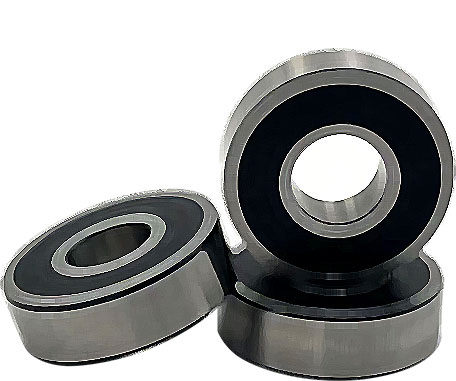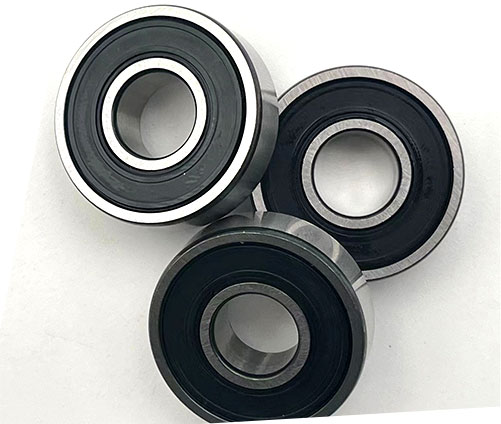A linear motion bearing is a machine element that constrains relative motion to only the desired motion and reduces friction between moving parts. In VXO, one of the top ball screw and linear bearing manufacturers in China, the linear motion bearing design may, for example, provide for free linear movement of the moving part or for free rotation around a fixed axis; or, it may prevent a motion by controlling the vectors of normal forces that bear on the moving parts. They are typically made from materials such as steel, aluminum, or plastic, and can be designed to handle a wide range of loads and speeds. Some common applications for linear motion bearings include robotics, CNC machines, and linear actuators.Most linear guide bearings facilitate the desired motion by minimizing friction. Bearings are classified broadly according to the type of operation, the motions allowed, such as precision angular contact bearings and cam roller bearings, or to the directions of the loads (forces) applied to the parts.
As one of the top linear bearing manufacturers in China, Linear motion is the most basic of all motion. Linear ball bearings provide linear movement in one direction. We VXO linear ball bearing manufacturer offer many linear motion components which can be customized. Our bearings can carry 4 to 8 times the load of ball bearings. New linear motion units line of stainless steel precision shafting features 1/64" x 45° chamfer at both ends. Linear slide guide blocks made of stainless steel, concentric and eccentric type guide wheels as well as new needle-bearing cam followers are available.

Once you know what size bearing you need, you now need to establish which type and brand of bearing is best for your bearing application. You might choose to do a like-for-like replacement, switching your bearing out for an exact replacement. However, we'd always recommend using bearing replacement as an opportunity to see if there is a bearing that is better suited to your application.
Not only will using the optimum bearing improve the running characteristics of your application, but it can also improve your energy efficiency and help to prevent premature.

Measuring a bearing doesn't need to be complex. We've put together the ultimate bearing manual guide to measuring a bearing, to give you the confidence that you need to accurately measure and identify your bearings.
Read on to learn how to measure a bearing quickly and accurately.
1. High precision: Linear guide bearings are designed to provide high precision in movement and positioning, ensuring accuracy and consistency in performance.
2. Low friction: The linear guide bearings have low friction, which makes them ideal for applications that require smooth and precise movement.
3. High load capacity: Linear guide bearings have a high load capacity, which makes them suitable for heavy-duty applications.
4. Long life: Linear guide bearings are designed to have a long service life, reducing the need for frequent replacements.
5. Easy installation: Linear guide bearings are easy to install and maintain, reducing downtime and increasing productivity.
6. Low noise: Linear guide bearings operate quietly, making them ideal for applications that require low noise levels.
7. Corrosion resistance: Linear guide bearings are made from materials that are resistant to corrosion, making them suitable for use in harsh environments.
8. Customizable: Linear guide bearings can be customized to meet specific application requirements, ensuring optimal performance.
Linear motion bearings can be made from a variety of materials, including:
1. Steel: Steel is a common material used for linear motion bearings. It is strong, durable, and can handle heavy loads.
2. Aluminum: Aluminum is a lightweight material that is commonly used for linear motion bearings in applications where weight is a concern.
3. Brass: Brass is a corrosion-resistant material that is often used for linear motion bearings in applications where there is exposure to moisture or chemicals.
4. Plastic: Plastic bearings are lightweight, corrosion-resistant, and can handle light to moderate loads. They are often used in applications where low friction is required.
5. Ceramic: Ceramic bearings are extremely durable and can handle high temperatures and heavy loads. They are often used in high-performance applications such as aerospace and racing.
Ball bearings, are probably the most common type of bearing for angular contact ball bearing supplier. They are found in everything from inline skates to hard drives. These bearings can handle both radial and thrust loads, and are usually found in applications where the load is relatively small.
As for the bearing working principle, roller bearings like the one illustrated below are used in applications like conveyer belt rollers, where they must hold heavy radial loads. In these bearings, the roller is a cylinder, so the contact between the inner and outer race is not a point but a line. This spreads the load out over a larger area, allowing the cylinder bearing to handle much greater loads than a ball bearing. However, this type of bearing is not designed to handle much thrust loading.
Ball thrust bearings like the one shown below are mostly used for low-speed applications and cannot handle much radial load. Barstools and Lazy Susan turntables use this type of bearing.
The most common time that you’ll need to measure a bearing is after a bearing failure. When your bearing fails, you’ll need to quickly establish the size and type of bearing before you can order its replacement.
Whilst most bearings have their reference numbers laser stamped or engraved into them, these numbers often rub off over time. If you’re unable to read the reference number on the side of your bearing, you’ll need to measure the bearing to determine its size.
Once you’ve established the type and size of bearing, you can choose to order a like-for-like replacement, or to upgrade your bearings to potentially extend their service life.